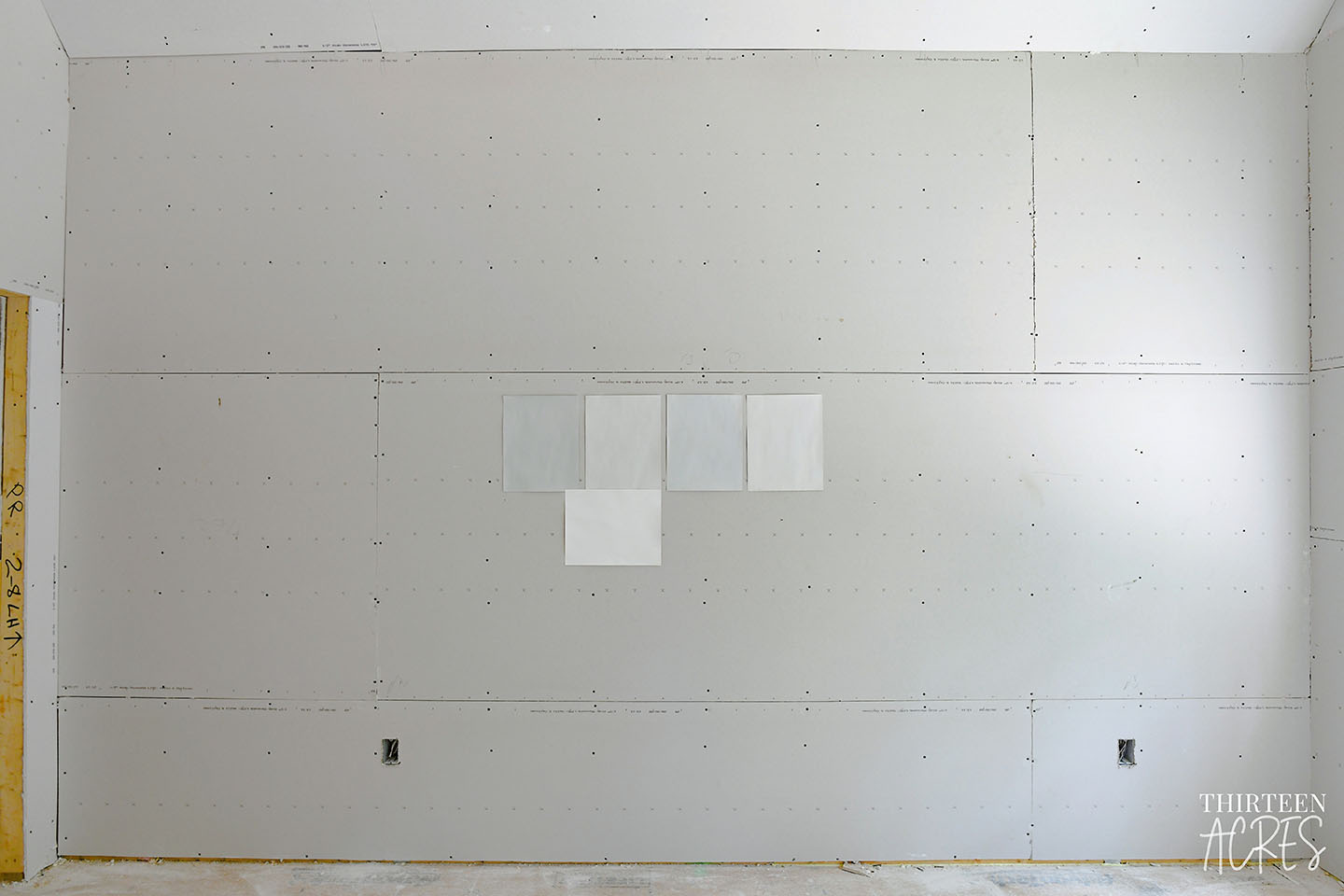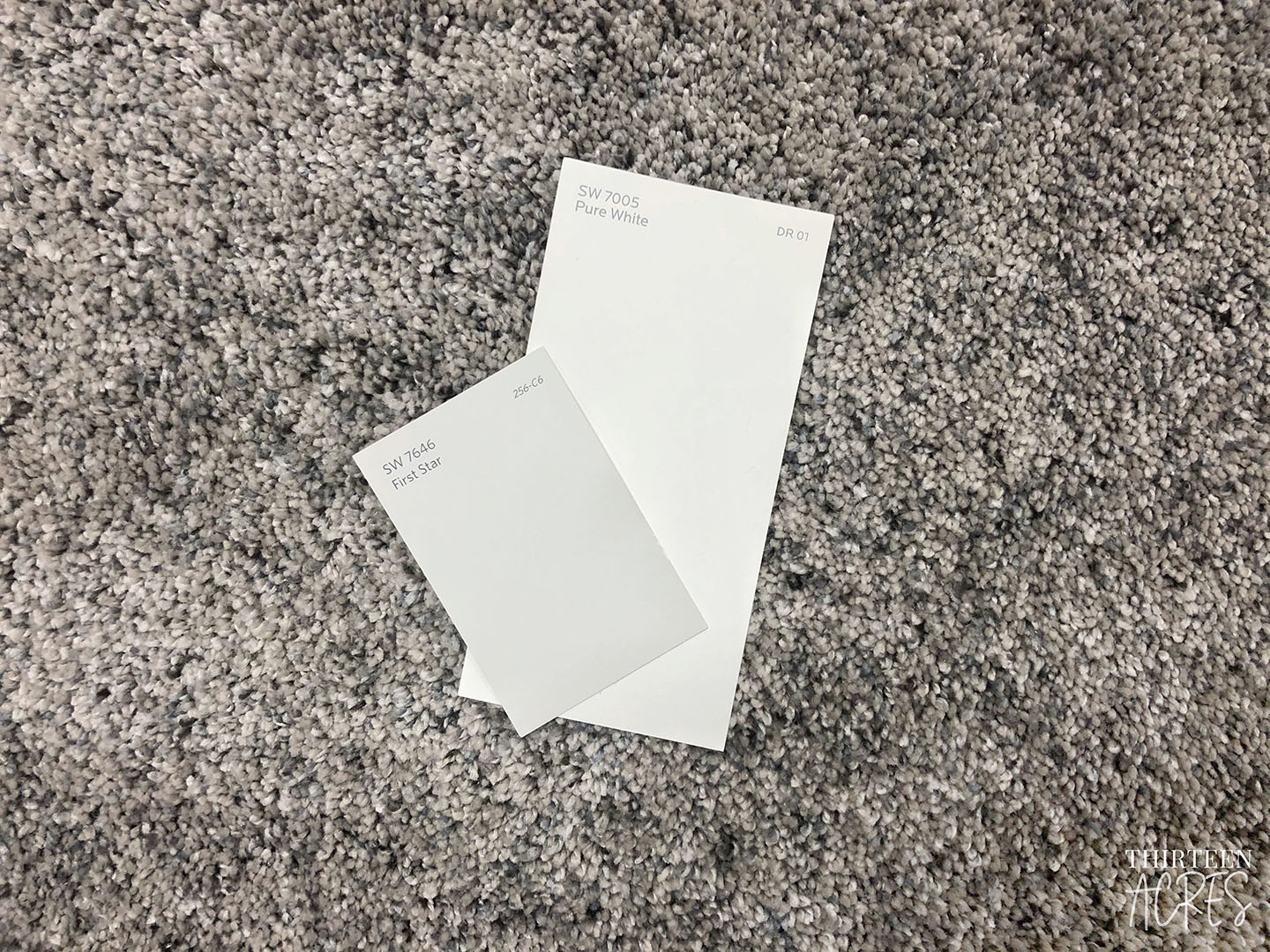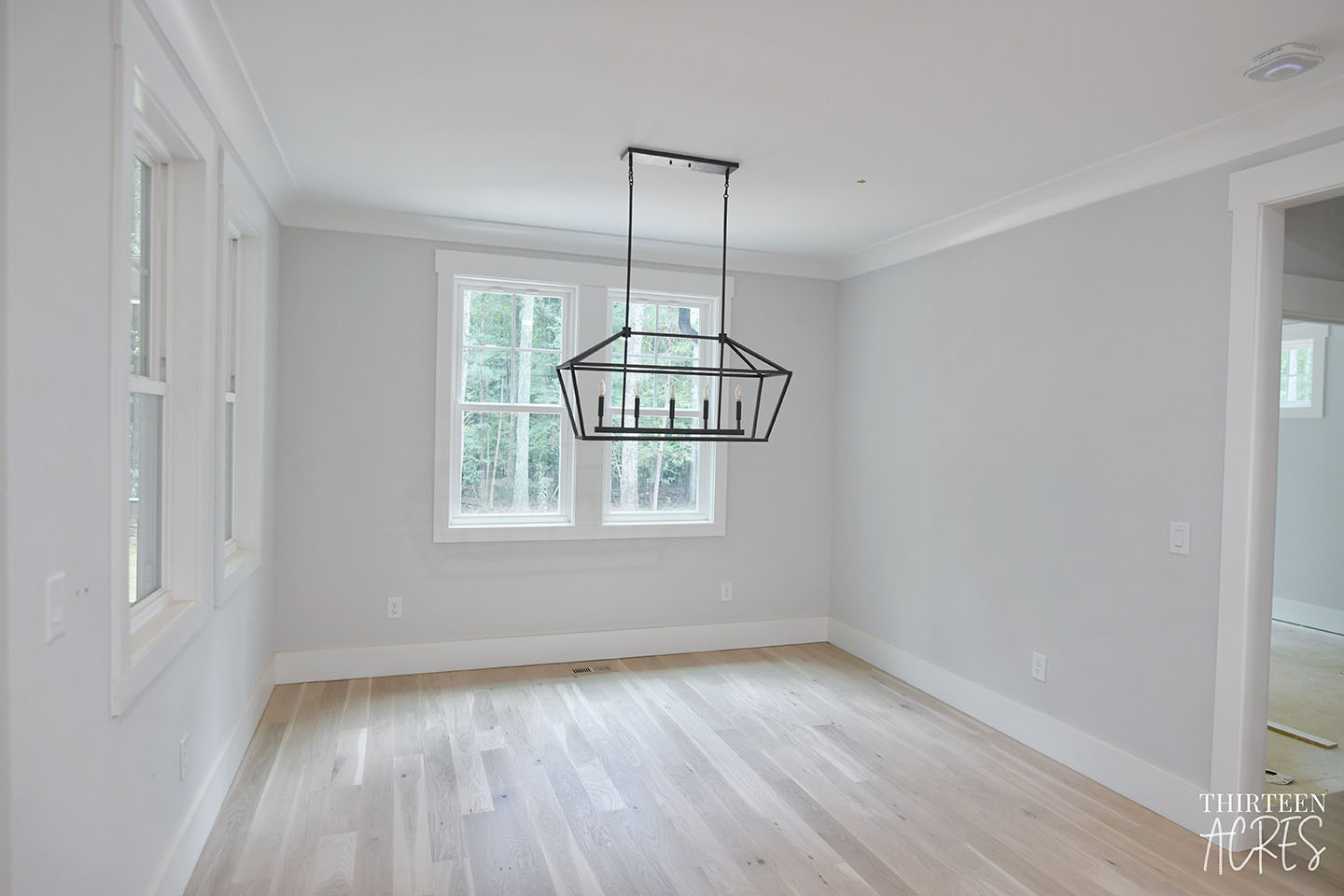Thirteen Acres is supported by our readers. When you buy through links on our site, we may earn an affiliate commission. As an Amazon Associate, we earn from qualifying purchases.
Selecting paint colors can be challenging, but luckily it's one of the easiest and relatively inexpensive things to change - trust us; we learned after we painted every room in our first home with an assortment of colors we thought were great choices, like bright pink coral in our kitchen and sunshine yellow in our bathroom.

If you don't want to make the same mistake we did, we would suggest sticking with a fairly neutral color palette, especially if you're building a new home. There are a few reasons why we think this is a good idea:
- It's typically cheaper if you select only one or two colors. Depending on your builder, if you choose multiple colors, it can add up.
- Since you're starting off in a new home, it's best to start with a neutral base of white, gray, or beige, because you can easily add pops of color with your decor or furniture.
- Unless you have a certain shade that you know and love from a previous home, it'll be easier to figure out which rooms or accent walls you may want to paint with some color once you've lived in the home for a while.
- It's much easier to paint over a neutral color if you decide to change it later on.
When you're trying to decide on a color, you have to be aware of the different undertones the shade may have. Some colors are cooler with blue, green, or purple undertones, while others are warmer and have a hint of orange, yellow, or red. Keep that in mind as you consider the lighting in your home, the color of your flooring, and the color of your furniture.
To help choose your colors, start by looking at some inspiration - whether it be photos online, walking through a model home, or simply researching popular colors (for example, we did an image search for Sherwin Williams gray to get some ideas). Once you've found a few that you like, you can either paint samples of the colors on a couple different walls in your home or paint the samples on pieces of poster board, which is what we did, and hang them up in your home with painter's tape. The key is to view these samples in different rooms, at different times of the day, so that you can see how the lighting will affect the color.

We also painted our trim color (Sherwin Williams Pure White) on a poster board so that we could see how the different shades of gray would look against the trim. If you happen to have any other samples from the finishes you've selected (such as carpet, hardwood, cabinetry) it might help to hold those against the paint samples as well.

Once you've nailed down the color, you also have to think about the sheen (flat, matte, eggshell, pearl, satin, semi-gloss, or high gloss). Typically, semi-gloss or high gloss is used for the trim, cabinetry, doors, and any wall details (like shiplap and wainscoting). The walls are generally a flat, eggshell, or satin sheen.
In our last house, we used a satin sheen paint for all of our walls. We did research before we painted the entire house and found it was recommended to use a satin or eggshell paint to make it easier to wipe down and clean. Our only experience with flat paint has been our apartment and we don't love how rough and gritty it feels and how hard it is to clean. We talked with our builder about possibly using satin, instead of the typical flat paint, and he explained why flat is usually the best choice.
He said that the rough gritty feeling we noticed on our apartment walls was likely due to them using low quality paint, or simply because they mixed the paint with water to make it thinner and cut costs. He assured us that his painting sub-contractor would not do that and the texture would not be as rough. He also said that although satin would be easier to wipe down, it would be much harder to touch-up. We actually did have this issue in our previous home - when we did some touch-up paint prior to selling our home, it was a bit shinier in the areas we touched-up under certain lighting. Although this may not be a huge issue for you, it is definitely something to consider! Lastly, satin paint is a more expensive paint, so using it for your entire house could definitely add up.

We ultimately decided to go with flat paint, and while they've done a few touch-ups now, we can't even tell where the new paint was applied! It also doesn't feel nearly as rough as our apartment walls do.
At the end of the day, don't let choosing interior paint colors stress you out. Although it may feel like such a huge decision, it's only paint. You can change it later on with minimal effort and cost!
If you have any suggestions for choosing interior paint colors, we'd love to hear them in the comments below!

Comments